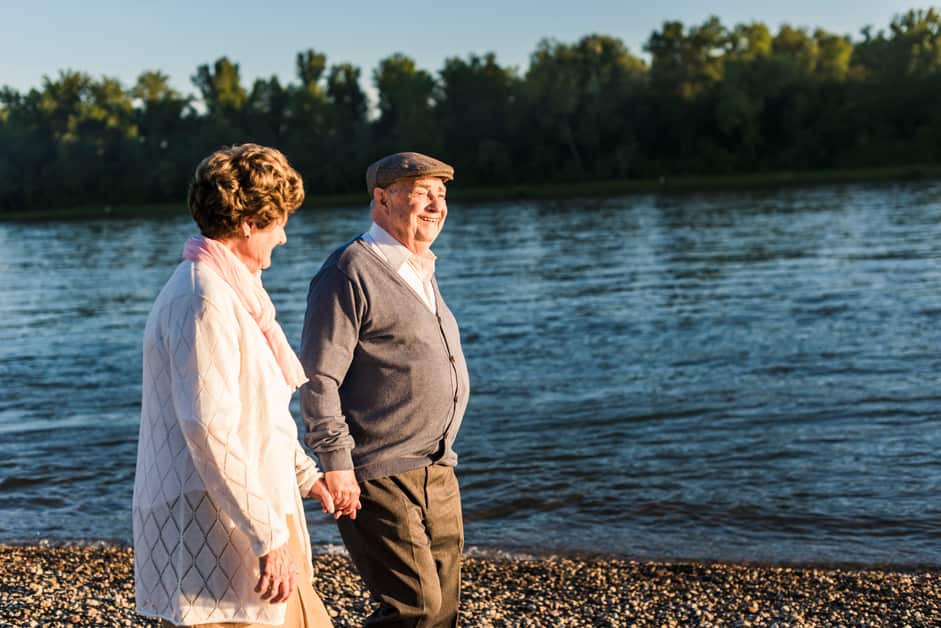Introduction
Knee pain can be terrible and stop you from doing everyday activities. Walking, if done correctly, may help manage and reduce the pain and help you do normal physical activities. This guide will discuss the fundamentals of walking with knee pain and how to use it rightly to improve knee health.
Benefits of walking for knee pain management
Walking is a great way to manage knee pain! It doesn’t cause much stress to the joints and can ease pain, inflammation, fatigue, and stiffness. It even increases endorphin levels which act as natural pain relief. Plus, walking can help with weight management, as every two pounds lost decreases pressure on the knees by 16 pounds.
Regular walking can also reduce flare-ups due to improved physical condition. Best of all, it requires no extra equipment or training – just good shoes! To optimize effectiveness, incorporate different terrains and intervals at different paces to keep you engaged for longer.
Preparation
Walk away from knee pain! To get started, you must prepare your body. These steps are key to walking safely and comfortably. Get ready: take essential steps to manage your knee pain with walking!
- Stretch your muscles before and after your walk.
- Make sure you have the right shoes. Shoes with good cushioning, arch support, and stability can help reduce knee pain.
- Check your posture. Make sure you are standing up straight and that your feet are pointing forward.
- Start slow and gradually increase your distance and speed.
- Listen to your body. If you feel any pain, stop and take a break.
Assess your current pain level
What level of pain are you in? Ask yourself these questions to find out:
- Do walking and other activities cause pain?
- How long does the pain last after you stop?
- Do motions or activities make it worse?
- Are there times during the day when it doesn’t hurt?
- Can you be active without more discomfort?
It’s key to know your current pain level. This helps you choose the best exercises for your situation. Also, it can tell you if the tips in this guide help reduce or ease the pain.
Choose the right shoes
Choosing the right shoes is a tough yet essential part of managing knee pain from walking. Shoes with a good fit, shock absorption and ankle support are necessary for lessening injury risk and existing knee pain. Here are some features to consider:
- Arch Support: For high arches, the shoes should have extra cushioning. For neutral or low arches, look for a firm midsole.
- Cushioning: Shock absorption cushioning is vital to protect feet, ankles and knees from pounding on hard surfaces.
- Heel Lift: Look for models with some degree of heel lift, which slightly raise your feet up when standing. This aids even weight distribution along the foot’s contact surface, helping with plantar fasciitis.
- Traction Sole: Lightweight flexible outsoles give traction on slick surfaces like ice and snow. Read customer reviews to make sure the shoes suit wet conditions.
- Secure straps/laces: Fasten laces and straps with press tabs/hooks to keep tie-knots from coming undone mid stride and causing ankle injuries.
Warm up before walking
Warm-up activities are key when dealing with knee pain. 5-10 mins of dynamic stretching and light cardio like marching or jogging can help. Examples of dynamic stretches include leg swings, high knees, butt kicks, and body-weight squats. This helps blood circulate around the body more quickly, warming up areas with less circulation, like your hips and knees.
Remember to add in strengthening exercises too! This can help maintain healthy muscle activation for better mobility when walking. Lunges or step-ups with weights are a great start. Warming up properly is essential to avoid injury or strain during exercise.
Walking Technique
Walk away from knee pain! Strengthen muscles and improve balance with walking. Follow these tips for best results:
- Keep your back straight.
- Select the right shoes.
Let’s make walking work for managing knee pain!
Keep your head up and eyes forward
When walking, keep your head up and eyes forward. This will ensure your body is properly aligned and that your weight is balanced. It also helps you maintain a natural posture and better breathing.
Knee pain? Don’t look down too much, as this can cause alignment problems. Focus on a spot ahead and walk steadily toward it. This will help with posture and alignment, and let your muscles move healthily and balanced.
- Distribute the weight evenly between both feet to reduce strain on the leg area.
- Walking tall with the head up will keep other parts in line, like the shoulders bent back instead of slouching forward.
- Listen to your body; adjust gait or speed as needed for comfort during movement.
Shorten your stride
To keep your walk efficient, have short strides. Stride length is how far your foot moves forward with each step. Long strides can cause knee pain. To find the right stride length, take shorter steps. Your feet should stay close to the ground when hitting and lifting off.
Speed isn’t the only factor for walking faster. Regularity and efficiency of your stride have the biggest impact on speed and comfort. When walking for medical reasons, faster isn’t always better. Focus on finding an efficient pace and maintaining an even rhythm (how many steps per minute).
Avoid over-striding
Take smaller strides and walk at a slower pace. This reduces stress on your legs and improves running efficiency. Aim for strides about equal to your hip width.
Engage your core muscles and maintain good posture.
Focus on pushing off the ground instead of pulling yourself forward with each step. This stops over-striding and turns a walk into a workout. Engage more muscles in each stride.
Post-Walk Care
Post-walk care is key for knee pain. After a walk, you need to do things to stop more harm. Taking proper care of your knee post-walk is essential to preserve its health. Here’s how to do it right!
- Apply a cold compress or ice pack to reduce swelling.
- Elevate your leg to reduce swelling.
- Take an over-the-counter pain reliever.
- Wear a compression bandage.
- Rest your knee.
- Gently stretch the knee.
- Exercise your knee.
Cool down after walking
It’s important to include a cool-down after your walk. Gentle walking will help relax your muscles and bring down your heart rate. During this cooldown, review how the walk went and how you felt.
Afterwards, stretch the muscles you used. You can do static or dynamic stretching. If you have knee joint pain, apply ice packs. Monitor yourself afterwards to identify any changes, so you can adjust the treatment plan.
Stretch your legs
Stretching your legs after a walk is crucial for your health and avoiding injury. Gentle stretching warms up the muscles evenly and lets you get the most from each workout. Spend 5 minutes or more stretching the main leg muscles like quads, hamstrings and calves. This lengthens the muscles and lowers lactic acid build-up, which can cause cramps and discomfort.
Focus on one muscle group at a time. Start with quads by standing up, lifting one knee to the chest, and holding it there for 10-30 seconds while keeping your back straight. Then do hamstrings by standing tall and bending forward, so that both hands reach down to an ankle or foot. Maintain even breath throughout the stretch, and stay in this position for 10-30 seconds, until a slight burn in the muscles. Lastly, stretch both calves by flexing them with feet facing forward, and then outward toward opposite sides of the room, for 10-30 seconds.
Take time to stretch after walking to prevent injuries like pulled muscles, shin splints, and Achilles tendinitis. Take care of yourself after each workout!
Use ice or heat to manage pain
After a walk, selecting either ice or heat to relieve knee pain can be tricky. Here are some tips:
- If you noticed swelling and feel worse after your walk, use ice. Apply it for 15 mins, several times a day within 48 hours post-walk.
- If muscle soreness persists after the walk, try heat. Heat boosts circulation and helps muscles relax, reducing soreness. Apply it 15 minutes twice/thrice a day, for a few days after walking.
Mixing both ice and heat packs can also help manage pain. Lastly, keep legs elevated and regularly stretch, as advised by your doctor or physiotherapist. This way, you’ll maintain knee health and reduce pain.
Conclusion
To wrap up, walking can be great for people with knee pain. It eases the pain and strengthens the muscles around the knee. It’s vital to focus on form when walking and avoid activities that put too much tension on the joint. Adding knee braces or other supports can also reduce pain and discomfort.
With the correct approach and tools, walking can be a secure and efficient way to deal with knee pain.
Summary of tips for walking for knee pain management
This guide provides tips to help you incorporate walking into your daily routine for knee pain management. Key takeaways are:
- Before walking, warm up with slow, light movements and stretching.
- Choose shoes that are comfy with flexible soles, arch support, and cushioning for stability.
- Walk on even surfaces, like flat sidewalks, not hills.
- Use poles for extra stability when needed.
- If you haven’t been walking, start slowly. Alternate walking and rest days to build strength.
- Consult a physical therapist if pain persists with any form of exercise. This ensures you get the right diagnosis and treatment plan.
Follow these guidelines and you’ll be on the way to long term knee pain management with walking!
Frequently Asked Questions
Q: What is the best way to manage knee pain while walking?
A: The best way to manage knee pain while walking is to start slowly and gradually increase your walking time over the course of weeks or months. As you walk, focus on using proper form and technique, such as keeping your back straight and shoulders relaxed, to reduce stress on your knees. Additionally, wearing supportive shoes and using a cane or other walking aid can help reduce knee pain.
Q: What exercises can help with knee pain?
A: Strengthening exercises are the best way to reduce knee pain. Strengthening the muscles in the thighs and around the knee helps provide support for the joint. Exercises such as leg lifts and knee bends can help strengthen the muscles and improve knee stability. Additionally, stretching exercises such as calf and hamstring stretches can help reduce tension in the muscles surrounding the knee.
Q: Are there any other ways to reduce knee pain while walking?
A: Yes, there are other ways to reduce knee pain while walking. Using a foam roller can help reduce tightness in the muscles and tendons around the knee. Additionally, using a compression sleeve can help reduce inflammation in the knee and provide added support. As always, it’s important to speak with a doctor before beginning any new exercise program.





